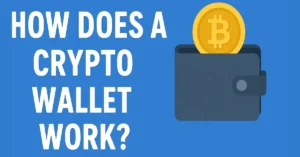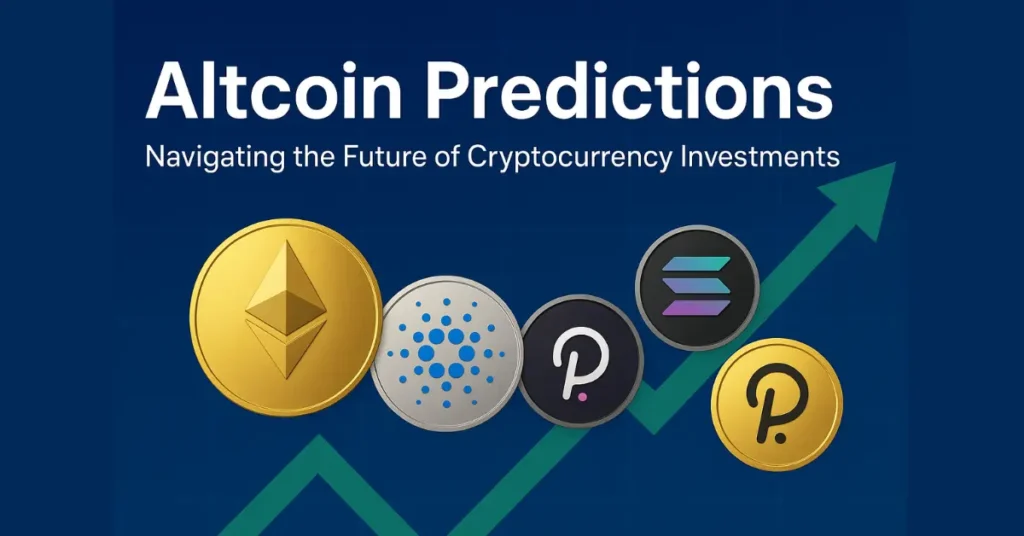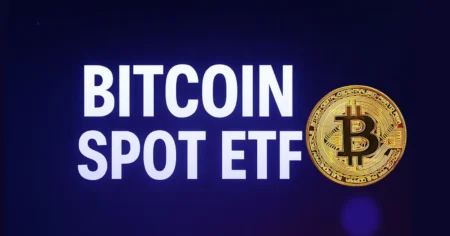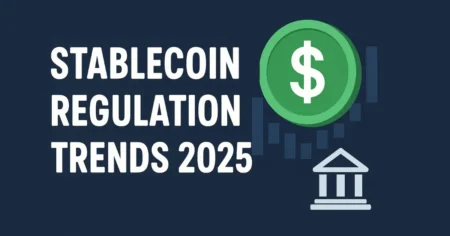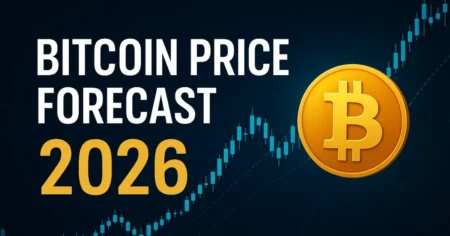In the dynamic world of digital currencies, altcoins have evolved from niche experiments into major players shaping the financial future. Bitcoin may have kicked off the crypto revolution, but the thousands of alternative coins—known as altcoins—now push innovation, diversify investment portfolios, and often outperform BTC during certain market cycles. As we approach the mid-2020s, predicting which altcoins will rise, fall, or completely reshape industries has become both an art and a science.
Investors are no longer simply asking, “Should I buy Bitcoin?” Instead, they’re exploring a broader question: “Which altcoins will lead the next wave of crypto growth?” With rapid technological advancements, shifting regulations, and the unpredictable forces of global markets, having well-researched altcoin predictions isn’t just interesting—it’s essential for smart investing.
This comprehensive guide breaks down the fundamentals of altcoins, examines historical trends, factors that drive prices, and expert forecasts, all while providing practical tips for navigating this high-risk, high-reward space.
Understanding the Altcoin Landscape
What Are Altcoins?
Altcoins, short for “alternative coins,” refer to all cryptocurrencies other than Bitcoin. While Bitcoin operates as a digital store of value and payment network, altcoins explore different functionalities, use cases, and blockchain technologies. They range from Ethereum’s smart contracts to privacy-focused coins like Monero, stablecoins like USDC, and governance tokens like Uniswap’s UNI.
The term “altcoin” emerged during Bitcoin’s dominance when all other coins were seen as alternatives. Today, some argue that Ethereum and a few other large-cap coins have moved beyond that label, but the general term still applies to the broader market.
The purpose of altcoins varies widely:
- Smart Contract Platforms – Enable decentralized apps (Ethereum, Solana, Cardano).
- DeFi Tokens – Facilitate lending, borrowing, and decentralized exchanges.
- NFT & Metaverse Tokens – Power digital assets and virtual worlds.
- Stablecoins – Pegged to fiat currencies for stability.
- Privacy Coins – Offer anonymous transactions.
Understanding these categories is crucial because each reacts differently to market conditions and technological developments.
How Altcoins Differ from Bitcoin
Bitcoin’s primary goal is to be a decentralized, deflationary store of value. Its blockchain is secure but relatively slow and limited in programmability. Altcoins, on the other hand, often prioritize innovation over stability.
Key differences include:
- Technology – Many altcoins use faster consensus mechanisms (e.g., Proof of Stake).
- Functionality – Altcoins may focus on smart contracts, DeFi, NFTs, or cross-chain compatibility.
- Supply Models – Bitcoin has a fixed 21 million cap, while altcoins may have inflationary or dynamic supplies.
- Governance – Some altcoins have built-in voting systems for upgrades.
While Bitcoin dominates in market cap, altcoins often outperform in percentage gains during bullish cycles, attracting risk-tolerant investors.
Categories of Altcoins
The altcoin universe is diverse, but it can generally be grouped into the following categories:
- Smart Contract Platforms – Ethereum, Cardano, Solana.
- DeFi Tokens – Aave, Uniswap, Maker.
- NFT/Metaverse Coins – Decentraland, Sandbox, Axie Infinity.
- Privacy Coins – Monero, Zcash.
- Stablecoins – USDT, USDC, DAI.
- Infrastructure Coins – Polkadot, Chainlink, Cosmos.
Emerging Experimental Coins – Niche projects with innovative features but higher risk.
Each category reacts to different market drivers. For example, a DeFi boom might send lending protocol tokens soaring, while stricter regulations could hit privacy coins hardest.
Key Factors Influencing Altcoin Prices
Market Sentiment and Investor Behavior
In crypto markets, perception often moves faster than reality. Positive news, celebrity endorsements, and social media buzz can cause sudden price spikes. Conversely, fear—whether triggered by regulatory crackdowns or market crashes—can send altcoins plunging within hours.
Retail investors, often driven by FOMO (Fear of Missing Out), can amplify volatility. For instance, during the 2021 bull run, coins like Dogecoin surged primarily due to hype rather than fundamentals. Understanding sentiment indicators like the Crypto Fear & Greed Index can help investors anticipate short-term price movements.
Technological Innovations and Upgrades
Upgrades and breakthroughs can dramatically impact altcoin valuations. Ethereum’s transition to Proof of Stake (Ethereum 2.0) is a prime example—its promise of scalability and sustainability attracted more institutional interest.
Factors to watch:
- Scalability Solutions (Layer 2, sharding).
- Interoperability Features (cross-chain swaps, bridges).
- Security Enhancements (improved consensus, bug fixes).
- Unique Use Cases (AI integration, supply chain management).
Projects that consistently innovate tend to maintain investor confidence, while stagnant ones risk fading into irrelevance.
Regulatory Developments
Cryptocurrency regulations vary widely across countries, and sudden policy changes can make or break an altcoin’s market potential. For instance, the SEC’s stance on whether a coin is a “security” can influence its availability on major exchanges.
In the U.S., growing clarity around stablecoin regulations could boost adoption, while stricter rules on privacy coins might limit their market. Globally, pro-crypto nations like Singapore and El Salvador may create favorable environments for blockchain projects, attracting capital and talent.
Global Economic Conditions
Altcoins don’t exist in a vacuum. Inflation rates, interest rates, geopolitical tensions, and macroeconomic cycles all influence investor behavior. For example, during periods of high inflation, investors may seek alternative assets like crypto, while in recessions, riskier investments often see capital outflows.
The interplay between traditional finance and crypto is becoming stronger—when global stock markets fall, altcoins often follow, though occasionally they decouple during crypto-specific bull runs.
Historical Trends in Altcoin Performance
Lessons from Previous Bull and Bear Cycles
Crypto’s history is marked by cycles of euphoria and despair. The 2017 bull run saw ICOs dominate, with many altcoins skyrocketing before collapsing in 2018’s “crypto winter.” Similarly, the 2020–2021 cycle brought explosive growth in DeFi and NFTs, but also severe corrections in 2022.
Patterns worth noting:
- Bull runs often start with Bitcoin, then capital flows into large-cap altcoins, followed by small caps (“alt season”).
- Bear markets can wipe out 80–90% of altcoin value, especially for low-liquidity projects.
- Innovation-driven coins tend to recover faster than hype-driven ones.
Case Studies of Successful Altcoins
Looking at the altcoins that have weathered market volatility and emerged stronger gives us valuable insight into what works.
Ethereum (ETH) is the prime example. Since its launch in 2015, Ethereum has evolved from a novel smart contract platform into the backbone of the DeFi and NFT sectors. Even during deep bear markets, its developer activity and ecosystem growth have remained strong, helping it retain its position as the second-largest cryptocurrency by market cap.
Binance Coin (BNB) is another standout. Initially launched to offer trading fee discounts on the Binance exchange, BNB has expanded into powering Binance Smart Chain (BSC), a major ecosystem for decentralized applications. Its strong use case, combined with Binance’s global presence, has kept it relevant and in demand.
Solana (SOL), despite facing network outages, demonstrated the power of scalability and low fees. At its peak, it supported thousands of transactions per second at a fraction of Ethereum’s costs. The network’s ability to attract NFT projects and DeFi protocols helped it achieve rapid adoption during the 2021 bull run.
From these cases, three patterns emerge:
- Clear Utility – The project solves a real problem.
- Ecosystem Growth – It fosters a network effect of developers, users, and integrations.
- Active Development – Frequent upgrades keep the platform competitive.
Common Pitfalls from the Past
While success stories inspire, failure stories teach caution. The 2017 ICO boom saw countless altcoins raise millions only to vanish within months. Many had vague whitepapers, inexperienced teams, or were outright scams.
Common pitfalls include:
- Overpromising, Under-Delivering – Ambitious roadmaps with no clear execution strategy.
- Centralization Risks – Too much control in the hands of founders or a single entity.
- Weak Security – Poor code audits leading to hacks and token thefts.
- Hype-Driven Growth – Prices inflated solely by social media buzz, collapsing once attention faded.
For investors, these lessons underline the importance of thorough due diligence before buying into a project.
Expert Predictions for Altcoins in 2025 and Beyond
The Rise of AI-Integrated Blockchains
Artificial intelligence is rapidly becoming a transformative force across industries, and blockchain is no exception. Experts predict that altcoins integrating AI capabilities—such as data analysis, fraud detection, and predictive modeling—will see strong adoption in the coming years.
For example, projects like Fetch.ai and SingularityNET are already blending AI with decentralized networks to enable automated services and intelligent data marketplaces. In 2025, we may see a surge of AI-powered DeFi platforms that adjust interest rates in real time or AI-enhanced NFT marketplaces that personalize digital art recommendations.
The synergy between AI and blockchain could also improve scalability, optimize consensus mechanisms, and enhance network security—making AI-driven altcoins attractive to both retail and institutional investors.
The Role of DeFi and Web3 Expansion
Decentralized finance (DeFi) has already disrupted traditional banking, but experts believe its real growth phase is yet to come. Altcoins powering decentralized exchanges (DEXs), lending protocols, and synthetic assets could see explosive demand as Web3 adoption accelerates.
Web3—the vision of a decentralized internet—relies heavily on altcoins for governance, payments, and smart contract execution. Coins like Ethereum, Polkadot, and Avalanche could benefit from being the infrastructure of this new digital economy.
By 2025, expect DeFi to move beyond speculative trading into real-world applications, such as decentralized insurance, on-chain supply chain financing, and tokenized real estate—all of which will require strong altcoin ecosystems.
Sustainability and Green Blockchain Solutions
Environmental concerns over crypto mining, particularly with Proof of Work systems, have led to increased demand for sustainable blockchain solutions. Many altcoins are now adopting Proof of Stake or other energy-efficient consensus models to reduce carbon footprints.
Projects like Cardano (ADA) and Algorand (ALGO) highlight this trend by prioritizing eco-friendly technology without compromising scalability. In the years ahead, green blockchain projects may not only gain investor approval but also regulatory support, making them prime candidates for growth.
Furthermore, ESG (Environmental, Social, and Governance) investment funds may increasingly allocate capital to sustainable altcoins, further boosting their market presence.
Top Altcoins to Watch in 2025
Ethereum (ETH)
Despite competition, Ethereum remains the dominant smart contract platform, with the largest developer community and ecosystem. The ongoing upgrades under Ethereum 2.0 aim to drastically reduce gas fees, improve scalability, and solidify its position as the backbone of DeFi and NFTs.
Its robust ecosystem means that even if individual sectors face downturns, Ethereum benefits from diverse revenue streams—ranging from decentralized exchanges to gaming projects. Many analysts believe ETH could outperform Bitcoin in percentage gains during the next alt season.
Cardano (ADA)
Cardano takes a research-driven approach to blockchain development, with a focus on scalability, sustainability, and interoperability. Its gradual rollout of smart contract capabilities has paved the way for DeFi projects and NFT marketplaces on its network.
While it has been criticized for slow development, Cardano’s methodical upgrades and academic peer review process give it a solid foundation for long-term growth. As adoption increases, ADA could see renewed momentum.
Solana (SOL)
Solana has positioned itself as one of the fastest blockchains, capable of handling thousands of transactions per second at minimal cost. While network outages have raised concerns, the team’s efforts to improve reliability are starting to pay off.
Its strong presence in the NFT space and growing DeFi ecosystem make it a contender for major adoption in 2025, especially if scalability issues plague Ethereum.
Polkadot (DOT)
Polkadot’s unique architecture enables different blockchains to communicate seamlessly. Its “parachain” system supports specialized blockchains that can connect to its main network, creating a highly scalable and interoperable ecosystem.
As more projects launch on Polkadot, DOT’s role as the governance and staking token positions it well for value growth. The Web3 Foundation’s backing adds further credibility.
Emerging Altcoins Worth Monitoring
Beyond the established players, several new projects could surprise investors:
- Aptos (APT) – A high-performance blockchain with a focus on developer-friendly tools.
- Near Protocol (NEAR) – Known for scalability and user-friendly features.
- Arbitrum (ARB) – A leading Layer 2 scaling solution for Ethereum.
- Immutable X (IMX) – Specializing in zero-gas-fee NFT transactions.
These projects carry higher risk but could deliver outsized returns if they secure strong adoption.
Altcoin Investment Strategies
Long-Term Holding vs. Short-Term Trading
When it comes to investing in altcoins, one of the first decisions you’ll face is whether to adopt a long-term holding (HODL) strategy or engage in short-term trading.
Long-Term Holding involves buying altcoins you believe will appreciate significantly over several years. This approach relies heavily on researching the fundamentals of a project—its team, technology, and adoption potential. Long-term holders tend to ignore short-term volatility, focusing instead on the big picture. Coins like Ethereum, Cardano, and Polkadot often attract long-term investors due to their established ecosystems.
Short-Term Trading, on the other hand, aims to capitalize on frequent price swings. This requires constant monitoring of charts, technical indicators, and market sentiment. Day traders and swing traders may profit quickly but also face higher stress levels and risk of losses from sudden market moves.
Ultimately, the best strategy may be a hybrid—holding a core portfolio of strong projects while allocating a smaller portion for short-term trades to take advantage of volatility.
Diversification for Risk Management
Crypto markets are notoriously volatile, and diversification is one of the most effective ways to manage that risk. Instead of putting all your funds into a single altcoin, consider spreading investments across multiple sectors:
- Smart Contract Platforms (Ethereum, Solana)
- DeFi Tokens (Aave, Uniswap)
- Metaverse/NFT Projects (Decentraland, Sandbox)
- Stablecoins (USDC, DAI) for liquidity and stability
Diversification doesn’t eliminate risk, but it can help protect your portfolio if one sector underperforms. For example, during the 2021 market corrections, NFT-related coins fell sharply, but some DeFi tokens held value better due to ongoing utility.
Using Technical and Fundamental Analysis
Successful altcoin investing often requires a mix of fundamental analysis (FA) and technical analysis (TA).
Fundamental Analysis involves evaluating the intrinsic value of an altcoin—its technology, team credibility, adoption rates, tokenomics, and roadmap progress.
Technical Analysis focuses on chart patterns, trading volumes, moving averages, and support/resistance levels to predict short-term price movements.
A balanced investor might use FA to select high-quality altcoins for the long term and TA to optimize entry and exit points. For instance, you might identify Solana as fundamentally strong but wait for a technical breakout before buying in.
Risks and Challenges in Altcoin Investments
Volatility and Market Manipulation
The crypto market is among the most volatile in the world, with altcoins capable of gaining—or losing—50% or more within days. While volatility presents opportunities, it also increases the risk of substantial losses.
Another factor to consider is market manipulation. Low-liquidity coins are especially susceptible to “pump-and-dump” schemes, where coordinated buying artificially inflates the price before insiders sell off. Staying away from low-volume altcoins or conducting thorough research before entry can mitigate this risk.
Security Threats and Hacks
Hacks and exploits remain a major challenge in the altcoin space. Even established DeFi protocols have lost millions due to smart contract vulnerabilities. Centralized exchanges, wallets, and blockchain bridges have also been targeted by cybercriminals.
To protect yourself:
- Use hardware wallets for long-term storage.
- Stick to reputable exchanges with strong security measures.
- Avoid connecting wallets to unknown or suspicious decentralized apps.
Remember—blockchain transactions are irreversible, so security must be your top priority.
Regulatory Uncertainty
Perhaps the most unpredictable factor affecting altcoin investments is regulation. Governments worldwide are still figuring out how to classify, tax, and monitor cryptocurrencies.
In the U.S., the SEC has already taken enforcement actions against certain altcoins it considers securities, impacting their availability on exchanges. Meanwhile, some countries have banned specific categories, such as privacy coins, citing anti-money laundering concerns.
For investors, staying informed about policy changes is critical. A favorable regulation can boost adoption overnight, while a restrictive one can cause sharp declines in value.
How to Research Altcoins Before Investing
Evaluating Whitepapers and Roadmaps
A whitepaper is a project’s blueprint—outlining its technology, purpose, and goals. A solid whitepaper should clearly explain:
- The problem it aims to solve
- The technical approach
- Tokenomics (supply, distribution, utility)
- Development roadmap
If a project’s whitepaper is vague, overly technical without practical examples, or filled with unrealistic promises, consider it a red flag. Similarly, the roadmap should include clear, achievable milestones.
Checking Developer Activity and Community Engagement
A vibrant developer community signals ongoing innovation and long-term viability. You can track developer activity through platforms like GitHub, which shows code updates and project commits.
Community engagement is equally important. Active forums, Telegram groups, and Twitter discussions often reflect a project’s adoption rate and user interest. However, be cautious—sometimes hype-driven communities mask weak fundamentals.
Analyzing Tokenomics and Supply Metrics
Tokenomics refers to the economic model behind an altcoin—how tokens are created, distributed, and used within the ecosystem. Factors to consider include:
- Total Supply vs. Circulating Supply – Coins with massive future supply unlocks may face downward price pressure.
- Utility – Does the token serve a real function, such as governance, staking, or transaction fees?
- Burn Mechanisms – Token burning can reduce supply over time, potentially increasing value.
A well-structured token economy encourages holding and usage, not just speculation.
The Role of Institutional Investors in Altcoin Markets
Impact on Liquidity and Market Stability
The entrance of institutional investors—such as hedge funds, venture capital firms, and publicly traded companies—has significantly influenced altcoin markets. Their large capital injections increase liquidity, making it easier for retail investors to trade without drastic price swings.
Institutional involvement can also lend credibility to a project, attracting more mainstream adoption. For example, when major firms invest in a blockchain infrastructure project, it signals confidence in the technology’s long-term viability.
Institutional vs. Retail Investor Strategies
While retail investors often chase short-term gains, institutions tend to focus on long-term positioning. They may accumulate altcoins over months, stake them for yield, or fund ecosystem development to ensure sustainable growth.
This divergence in strategy can actually stabilize markets—institutions buying during dips counteract panic selling from retail participants. However, it can also create competition, as retail investors face well-funded entities with access to better research and market insights.
Predictions for Altcoin Market Capitalization Growth
Potential Trillion-Dollar Market Scenarios
The altcoin market, once considered a niche segment of cryptocurrency, is now an essential part of the digital asset ecosystem. Analysts project that by the end of this decade, the combined market capitalization of altcoins could exceed $3–5 trillion, driven by mainstream adoption, institutional investment, and technological breakthroughs.
Several factors could support this growth:
- DeFi Expansion – As decentralized finance applications replace traditional banking services, the demand for altcoin-powered platforms could surge.
- Tokenization of Real-World Assets – From real estate to stocks, tokenizing assets will require blockchain networks and native altcoins.
- Global Payment Integration – More merchants and financial institutions accepting altcoins could boost transaction volumes and market value.
If blockchain adoption continues at its current pace, we could see a scenario where the altcoin market equals or even surpasses Bitcoin’s market capitalization.
Factors That Could Accelerate or Slow Growth
While growth potential is immense, there are factors that could either speed up or delay progress:
- Accelerators
- Widespread Web3 adoption.
- Integration of altcoins into mainstream finance (ETFs, payment apps).
- Advancements in scalability and interoperability.
Barriers
- Harsh regulations in major economies.
- Technological failures or security breaches.
- Extended bear markets reducing investor confidence.
- Investors should watch these macro drivers closely when making long-term predictions.
Long-Term Outlook: Will Altcoins Overtake Bitcoin?
Market Share Shifts
Historically, Bitcoin has dominated cryptocurrency market share, often holding 40–70% of total market capitalization. However, as altcoins mature and offer specialized solutions, Bitcoin’s dominance is gradually being challenged.
If decentralized applications, metaverse economies, and blockchain-based enterprise systems continue to expand, altcoins could claim a much larger share of the overall crypto market. In fact, during periods of “alt season,” Bitcoin’s dominance has temporarily dropped below 40%, showing that investors are willing to rotate capital into other projects.
Technological Superiority Debate
Some argue that certain altcoins are technologically superior to Bitcoin. They may offer faster transactions, lower fees, and broader functionality. For instance:
- Ethereum – Smart contracts and DeFi infrastructure.
- Solana – High-speed, low-cost transactions.
- Polkadot – Blockchain interoperability.
However, Bitcoin’s first-mover advantage, unmatched security, and strong brand make it hard to dethrone completely. The future could see a coexistence model—Bitcoin as a store of value, and altcoins as the engines of decentralized innovation.
Tips for Staying Ahead in the Altcoin Market
Following News and Market Updates
In crypto, things move fast. Regulatory announcements, exchange listings, and technological upgrades can all cause sudden price swings. Reliable sources include:
- Crypto-specific news outlets (CoinDesk, The Block).
- Twitter accounts of respected analysts and developers.
- On-chain analytics platforms for real-time data.
Setting up alerts for keywords related to your portfolio coins ensures you never miss critical updates.
Networking in Crypto Communities
Engaging in online crypto communities—on Reddit, Telegram, Discord, and Twitter—offers valuable insights from both enthusiasts and experts. Community sentiment often acts as an early indicator of trends.
However, keep in mind that community hype can be misleading. Always verify claims with your own research before investing based on social chatter.
Leveraging AI Tools for Market Predictions
Artificial intelligence is becoming a powerful ally for traders and investors. AI-powered analytics can:
- Identify patterns in historical price data.
- Monitor social media sentiment in real time.
- Predict short-term volatility using machine learning models.
While no tool guarantees accuracy, combining AI predictions with human judgment can improve decision-making.
Conclusion – The Road Ahead for Altcoins
The altcoin market is set for significant evolution over the next few years. Technological innovation, global adoption, and integration into everyday finance could propel many projects to new heights. However, the journey will be anything but smooth—regulatory battles, security concerns, and market volatility will continue to test investors’ resilience.
Success in altcoin investing requires a blend of research, risk management, and adaptability. Those who stay informed, diversify intelligently, and remain patient through market cycles will be best positioned to benefit from the next wave of growth.
In 2025 and beyond, altcoins will likely remain a dynamic force—challenging Bitcoin’s dominance, driving blockchain innovation, and reshaping how the world views money and digital ownership.
FAQs About Altcoin Predictions
Are altcoin predictions reliable?
Predictions are educated guesses based on current market trends, technology, and macroeconomic factors. They should guide strategy but never replace due diligence.
Which altcoin has the highest growth potential in 2025?
Ethereum, Solana, and Polkadot are strong contenders, but emerging projects like Arbitrum and Aptos could surprise investors.
How much should I invest in altcoins?
Never invest more than you can afford to lose. Many investors allocate 20–50% of their crypto portfolio to altcoins, depending on risk tolerance.
Can altcoins survive without Bitcoin?
Yes, many altcoins have their own ecosystems and use cases. However, Bitcoin’s presence often stabilizes the broader crypto market.
What’s the safest way to store altcoins?
A hardware wallet is the most secure option, especially for long-term holdings.
Also, read
- What is a crypto wallet, and how does it work? – Coinsify
- 10 Crypto Terms Every Beginner Must Know: Coinsify
- What is blockchain technology? Complete Guide – Coinsify
- How to Buy Crypto Safely in 2025: Complete Guide – Coinsify
- Bitcoin vs Ethereum: Key Differences Explained: Complete Guide
- Ultimate Blockchain Glossary: Learn Blockchain Terms Easily
- How to Buy Bitcoin Safely (Complete Beginner’s Guide)
- Top 10 Crypto Wallets for Beginners (2025 Edition)
- What is cryptocurrency? A Beginner-Friendly Guide (2025)
